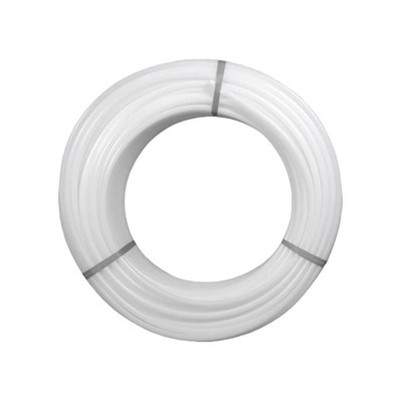Is PERT Pipe fire - resistant?
Leave a message
Hey there! As a PERT Pipe supplier, I often get asked this burning question: "Is PERT Pipe fire - resistant?" It's a crucial query, especially when it comes to safety in construction and plumbing projects. So, let's dig deep into this topic and find out the truth about PERT Pipe's fire - resistance.
First off, let's understand what PERT Pipe is. PERT stands for Polyethylene Raised Temperature - resistant. It's a type of plastic pipe that's widely used in hot and cold water distribution systems, underfloor heating, and even some industrial applications. The reason for its popularity is its flexibility, durability, and ease of installation. You can check out PERT Tube for more details on the types and uses of PERT pipes.
Now, back to the main question: fire - resistance. When we talk about a material being fire - resistant, we mean that it can withstand exposure to fire without catching fire easily or spreading flames rapidly. Unfortunately, PERT Pipe is not inherently fire - resistant. Polyethylene, the base material of PERT Pipe, is a hydrocarbon polymer, which means it is flammable. When exposed to high temperatures or an open flame, it will start to melt and burn.
But don't be too quick to write off PERT Pipe. Just because it's not fire - resistant doesn't mean it can't be used in fire - sensitive areas. There are ways to mitigate the fire risk associated with PERT Pipe. One common method is to use fire - retardant coatings or insulation. These materials can slow down the rate at which the pipe burns and prevent the spread of flames.
Another approach is to ensure proper installation and protection. When installing PERT Pipe in areas where fire safety is a concern, it should be installed in a fire - rated enclosure. This could be a metal or concrete chase that provides an extra layer of protection against fire. Additionally, fire - stopping materials can be used around the pipe penetrations in walls and floors to prevent the passage of fire and smoke.
Let's take a look at some real - world scenarios. In a residential building, PERT Pipe is often used for hot and cold water supply. While the risk of a direct fire reaching the pipes is relatively low, it's still important to consider fire safety. For example, if there's a kitchen fire, the heat could potentially reach the PERT pipes in the nearby walls or ceilings. By using fire - retardant insulation and proper installation techniques, the risk of the pipes contributing to the spread of the fire can be minimized.
In commercial and industrial settings, the requirements for fire safety are even more stringent. PERT Pipe used in these environments may need to meet specific fire - performance standards. For instance, in a factory where there are potential sources of ignition, the pipes should be installed in accordance with local fire codes and regulations. This might involve using fire - rated pipes or additional fire - protection measures.
It's also worth noting that the fire performance of PERT Pipe can vary depending on its quality and the manufacturing process. High - quality PERT pipes are more likely to have better mechanical and thermal properties, which can indirectly affect their fire performance. When choosing PERT Pipe for your project, it's important to source it from a reputable supplier who can provide information on the pipe's fire - related characteristics.
Now, let's talk about the testing and certification of PERT Pipe's fire performance. There are several international standards and tests that evaluate the fire behavior of plastic pipes. For example, the UL 94 test is commonly used to assess the flammability of plastic materials. Pipes that pass certain levels of the UL 94 test are considered to have better fire - performance characteristics.
In addition to these standardized tests, some manufacturers may conduct their own in - house testing to ensure the quality and fire - safety of their PERT pipes. When you're considering purchasing PERT Pipe, ask the supplier about the testing and certification they have for their products. This will give you a better idea of the pipe's fire - resistance capabilities.
So, to sum it up, PERT Pipe is not fire - resistant by nature, but there are ways to make it suitable for use in fire - sensitive areas. By using fire - retardant coatings, proper installation, and following fire - safety regulations, you can reduce the fire risk associated with PERT Pipe.
If you're in the market for PERT Pipe and have questions about its fire - resistance or any other aspect of the product, I'm here to help. As a supplier, I have extensive knowledge and experience in the field. Whether you're working on a small residential project or a large commercial development, I can provide you with the right PERT Pipe solutions.
If you're interested in learning more or starting a purchase negotiation, feel free to reach out. We can discuss your specific requirements, project details, and find the best PERT Pipe options for you. I'm committed to providing high - quality products and excellent customer service, so don't hesitate to get in touch.
References:


- "Plastic Pipes Handbook" - A comprehensive guide on plastic pipes including their properties and applications.
- International Building Codes related to fire safety and plastic pipe installation.
- Manufacturer's technical data sheets on PERT Pipe fire performance.




